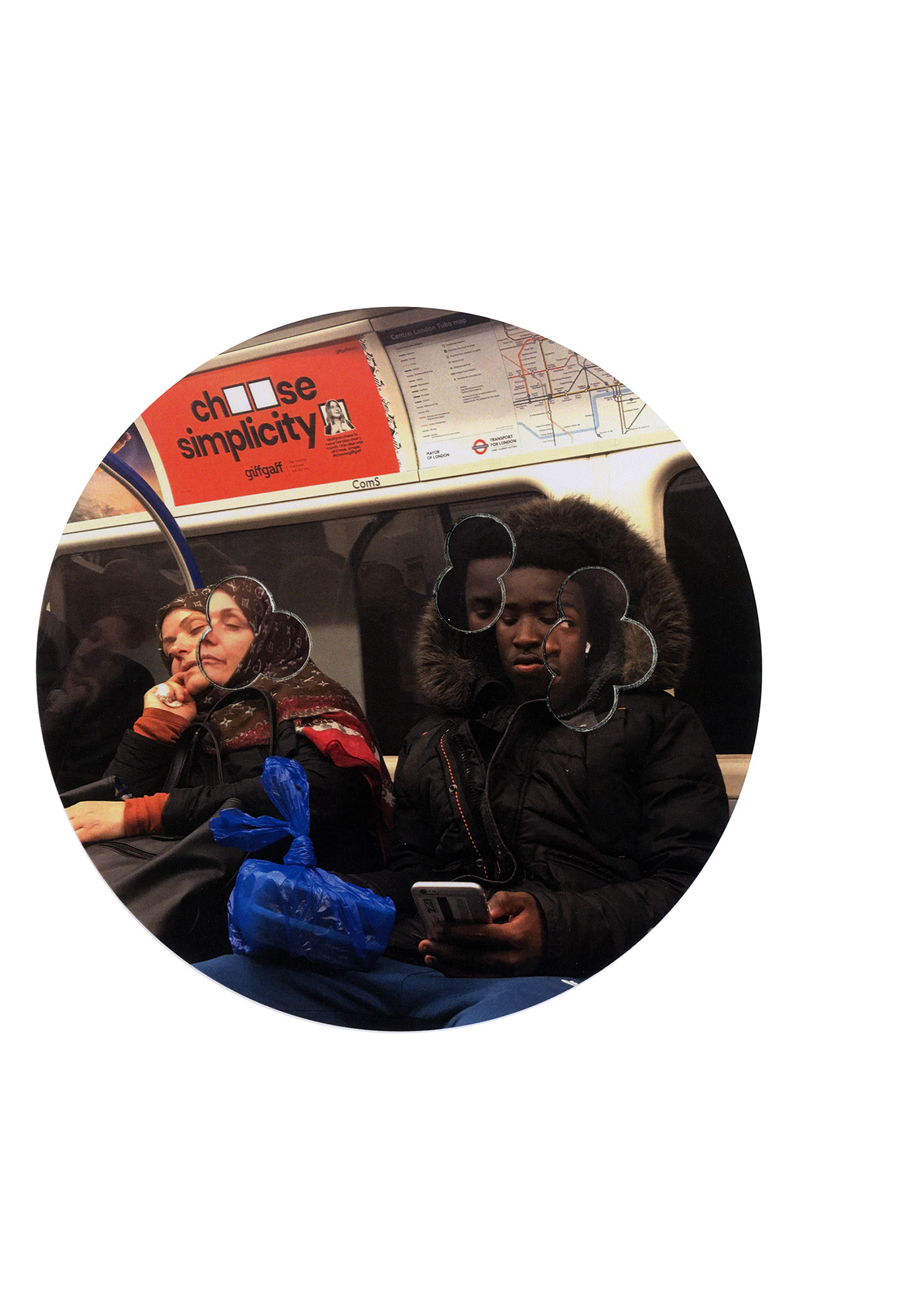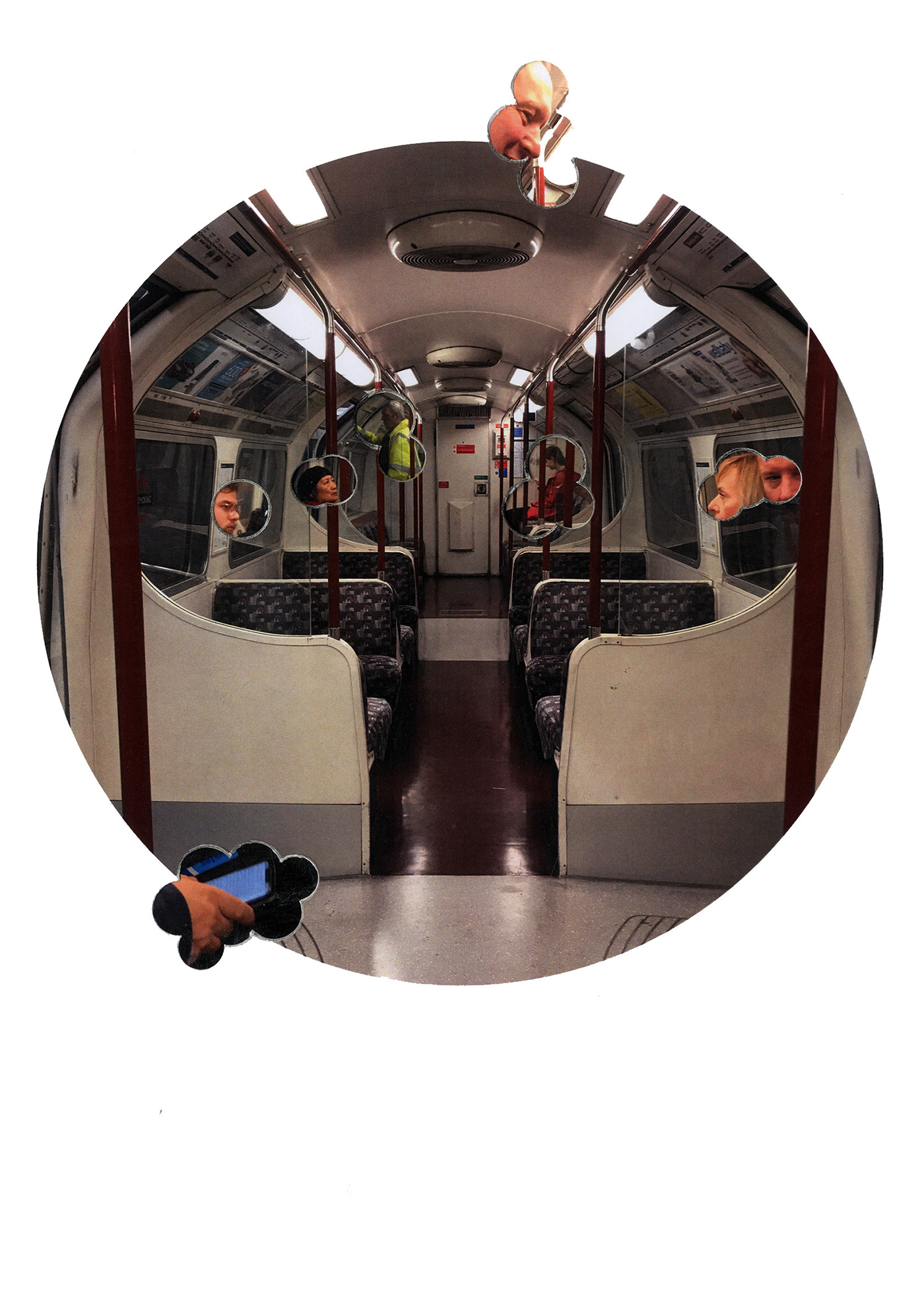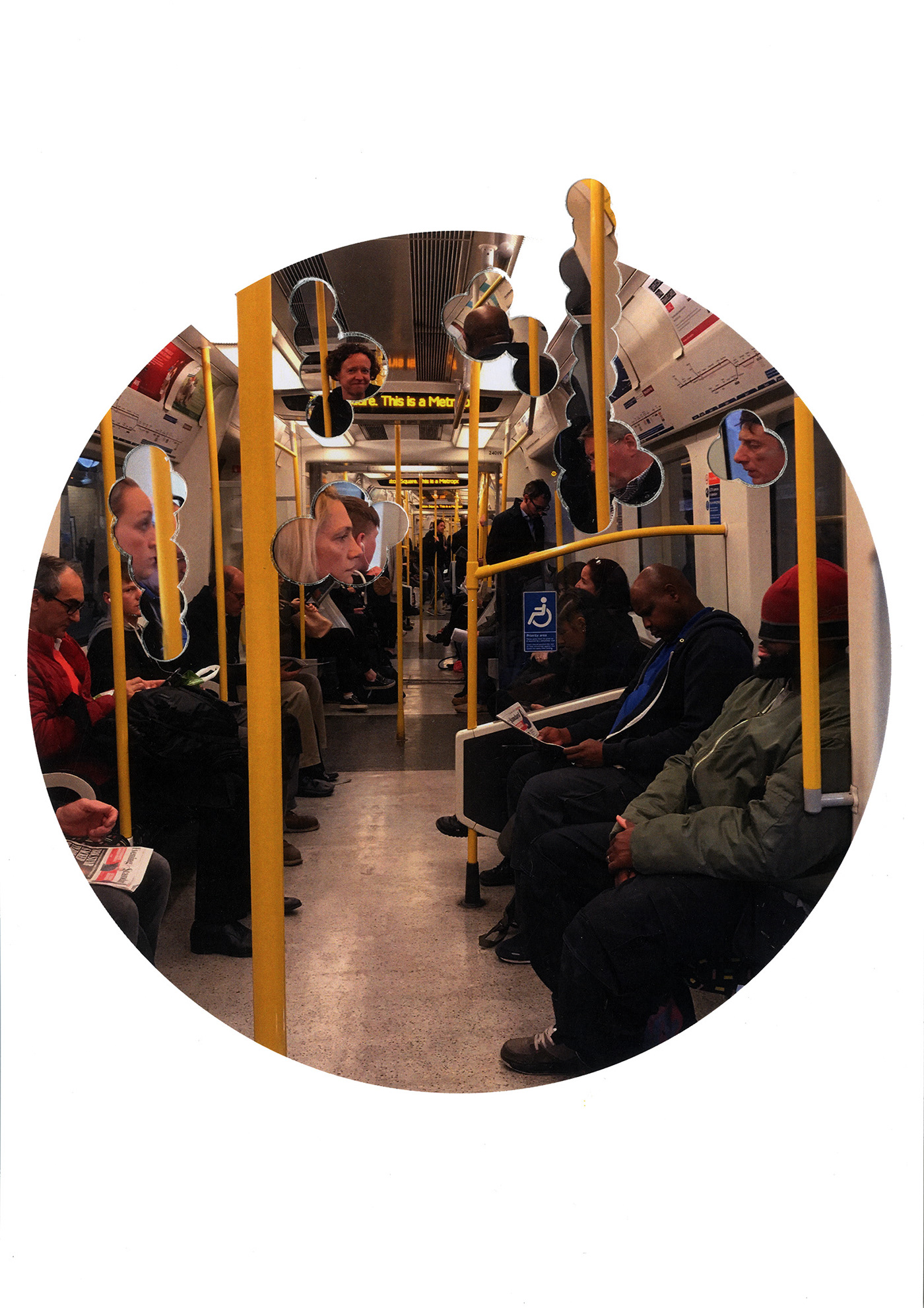The Commuting series:
a photographic essay based in my incomplete perceptions
collage size A4
photo of collage 100x150cm (maximum size)
Since I moved to London seven months ago, aside from several changes in my life style, which included language, food habits and a new home, I began to use the underground almost daily. In my country, only big centres have this kind of transportation and my city does not have one. It means that culturally I am more used to observe life on streets and sidewalks. However, once going underground was becoming a routine here, I could develop new perceptions in this environment which IS much different of those I had during my vacations in other countries. When I was a tourist, going underground was an adventure that went along with the excitement of looking for the next stations, learning how to use machines that sell tickets, walking in busy corridors, seeing the advertisements or paying attention to decoration of the paths. Being a regular customer transformed my way to perceive this place. After I have memorised the directions to take and the surroundings did not bring nothing new, this maze of tunnels became less meaningful with signs almost invisible. Maybe for this reason, when I decided to create a photographic essay inspired by London underground, I knew that I should focus on lives inside each carriage. Probably because human beings are an element of constant renewal in any travelling.
Since September 2018, I have been in almost all underground lines in different times of the day and some, like Central Line and Overground, I have travelled through all their extensions. When I started to wonder about the kind of photography essay I would develop inside carriages, my intention was that the work was not a realistic representation of this place. Instead of the mimetic approach, I decided to de-construct the interior of the carriages as a translation of my visual research in their interiors. Following Jacques Aumont´s definition of visual research, it is something constructed along the time because “we do not look at images in one go, but through successive fixations” (1997:39). Thus, what we visualise is the integration of these fixation points. When I am inside of any carriage my point of view is random and the space is transformed by the accumulation of several perspectives. Even when I am still, my gaze can easily move from the advertisement that is in front of me to the other side of the couch passing by people, clothes and a variety of objects. My perception is both accumulative and incomplete because what I remember is not a photographic replica, but an abstract representation that captures the general outline of the scene. For this reason, I did not want my photographs to look like a documentary because this series is an outcome of my incomplete perceptions. The structure of layers of photographs that were hole punched and finally assembled into just one piece was intentionally constructed to be a collage of reminiscences like the confused memories I have of all those carriages in my mind.
By pushing holes into my photos, I also created fixation points that, similarly to Aumont´s model, are the source of my image´s comprehension. Based in my ‘incomplete perceptions’, each photograph is like a puzzle where fragments offer clues that can be connected into multiple possibilities. There is no logical explanation for the location of these points/holes. Sometimes it is an object or the feature of a person that I find interesting and in others the interference is just to add another geometric element in the shape of the composition. However, all of them compose an open visual narrative in which the absence of some details clears the space for the viewer´s imagination to flow. In my attempt to avoid the realistic approach, I ended up creating this surreal environment filled of incomplete bodies and hidden actions. The resemblance of the carriage is there, but this familiarity is broken when I begin to excavate the pictures and discover other spaces and temporalities beneath the surface. The contrast of what seems recognizable and the deformations I consciously inscribe in the photographs depict my personal way to represent what I feel in commuting.
One final reference of this work is movement. There is a cinematic intention that goes beyond the movement of the eyes while scanning the photo. The apprehension of the image is slower because it is not clear and maybe never will. The meaning comes from the time we spend looking at that collection of points and filling those gaps I left behind with our personal memories and intuitions. From this moment on, those points activate stories and perceptions that are not explicit in my picture. In a way, The commuting series is like the carriages themselves. The difference is that they move inside our minds and use as a path the ‘tunnels’ I dug in.










